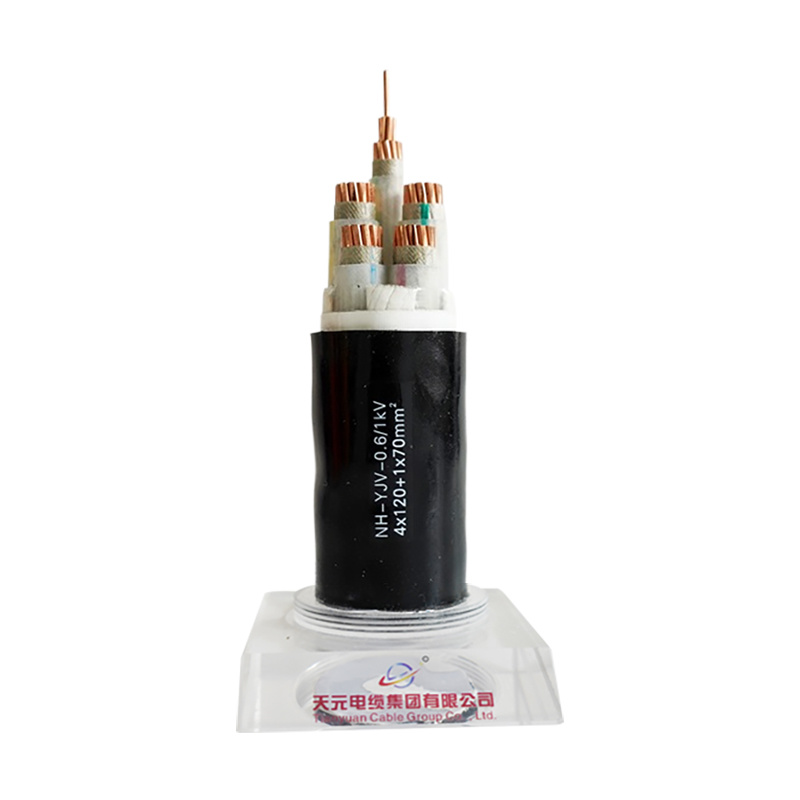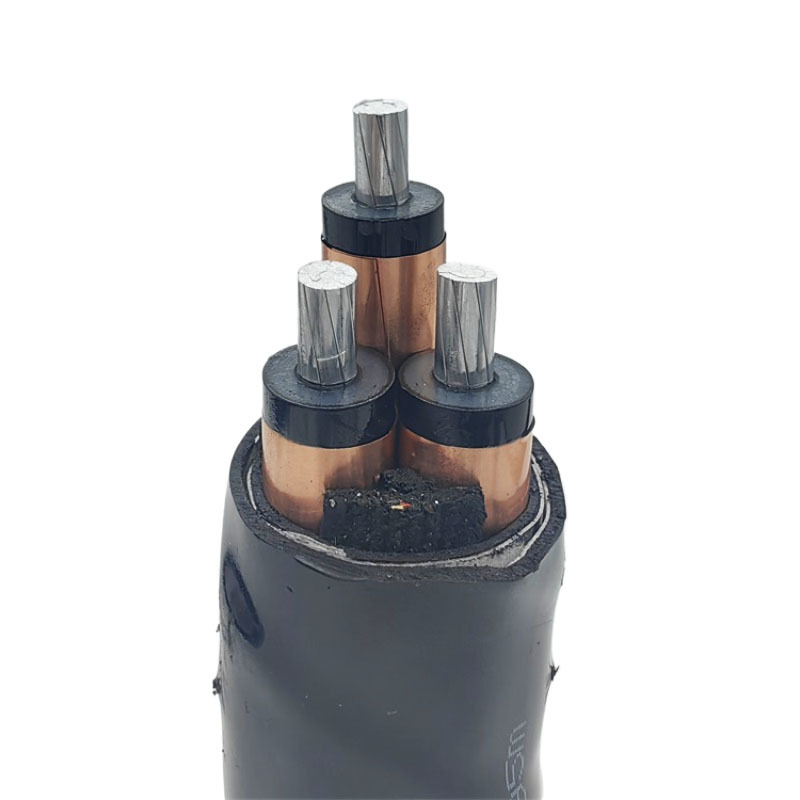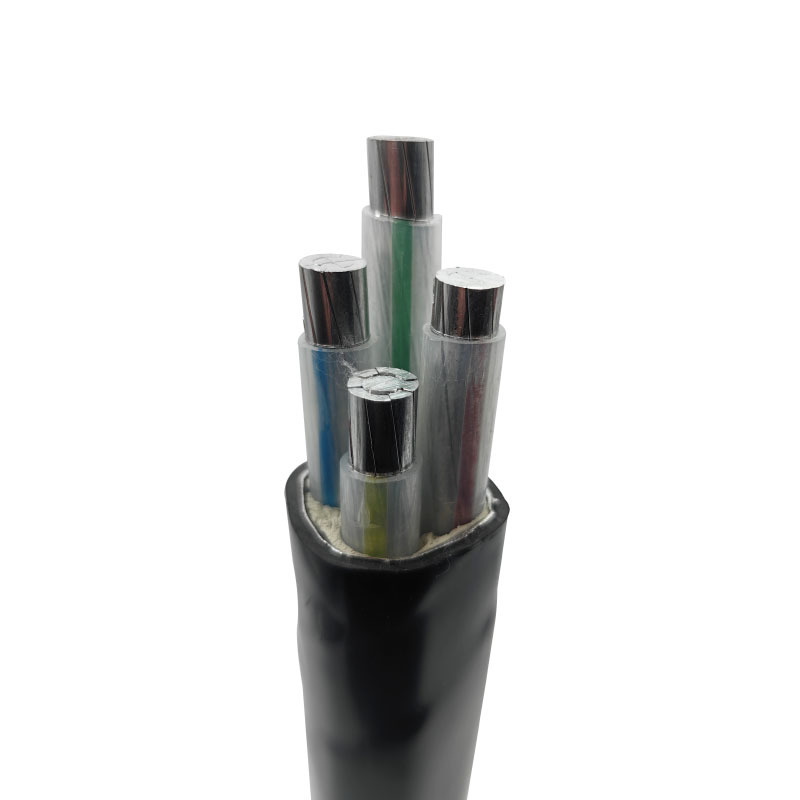

Medium-voltage power cable
If you need customized products,Contact us!
Product Category
Label List
- Description
-
Medium-voltage power cables are an indispensable and important component of power systems. The following is a detailed introduction:
Definition and Voltage Level
Medium-voltage power cables refer to power cables with a rated voltage between 1kV and 35kV. Power cables are classified by voltage level into medium and low voltage power cables (35kV and below), high voltage cables (110kV and above), extra-high voltage cables (275~800kV), and ultra-high voltage cables (1000kV and above).
Basic Structure
The basic structure of a medium-voltage cable typically consists of the following parts:
1. Conductor: The core of the cable, usually made of copper or aluminum, serves as the main channel for current transmission. Copper conductors are often preferred due to their higher conductivity, effectively reducing energy loss; while aluminum conductors, due to their lightness and lower cost, are also often used in some economical cable products.
2. Inner Semiconductive Screen: Usually made of semiconductive material, its main function is to prevent uneven distribution of the electric field within the cable, reducing field concentration on the conductor surface, thereby avoiding the generation of excessively high electric field strength inside the cable. It also enhances the stability of the cable and prevents breakdown.
3. Insulation Layer: A crucial part of the medium-voltage cable, responsible for isolating the conductor from the external environment and preventing current leakage. The insulating material is usually high-strength polyethylene (PE) or cross-linked polyethylene (XLPE). Cross-linked polyethylene has good thermal stability and voltage resistance and can operate stably under high temperature and voltage for a long time. The thickness of the insulation layer is designed according to the rated voltage and operating environment of the cable to ensure that the cable can withstand the required voltage and mechanical stress.
4. Outer Semiconductive Screen: Also made of semiconductive material, its main function is to equalize the electric field distribution and prevent external electromagnetic interference from affecting the performance of the cable. This layer effectively prevents sudden changes in the electric field outside the cable and also helps with mechanical protection. The outer semiconductive screen is usually directly wrapped around the insulation layer and works in conjunction with the inner semiconductive screen.
5. Metallic Shield: Usually made of copper tape or copper wire, its main function is to prevent leakage of the internal and external electric fields of the cable, providing additional electrical safety protection. In addition, it can enhance the cable's resistance to external damage, such as mechanical damage and corrosion. In case of short circuits or other faults in the cable, the metallic shield can effectively reduce the damage caused by short-circuit current to the cable.
6. Sheath: The outer protective layer of the cable, usually made of corrosion-resistant and wear-resistant polyvinyl chloride (PVC) or other special plastic materials. The sheath mainly plays a protective role against water, moisture, acids and alkalis, and aging, ensuring that the cable is not damaged by the external environment during long-term operation.
Applications and Applicable Scenarios
Medium-voltage power cables are often used for medium-voltage power transmission in urban power distribution networks, industrial power supplies, and power substations. It is suitable for medium-voltage power transmission systems with rated voltages between 1kV and 35kV, such as urban power distribution and factory production equipment power supply.
Current Carrying Capacity and Influencing Factors
Current carrying capacity refers to the maximum current value that a power cable can withstand. Exceeding this value will affect the cable and may even cause failures. The current carrying capacity of medium-voltage power cables is crucial for ensuring the safety and reliability of power transmission. The main factors affecting the current carrying capacity of medium-voltage power cables include:
1. Conductor Material: Different conductor materials have different resistivities and conductivity, directly affecting the cable's current carrying capacity.
2. Ambient Temperature: High temperatures will reduce the cable's load capacity, so ambient temperature is also an important factor affecting current carrying capacity.
3. Cable Cross-section: The size of the cable cross-section also affects its current carrying capacity.
4. Insulating Material: The properties of the insulating material also affect the cable's current carrying capacity.
5. Conductor Arrangement: The arrangement of the conductors also affects the current carrying capacity.
Maintenance and Care
In order to extend the service life of medium-voltage power cables and ensure their stable operation, regular maintenance and care are required. Specific measures include:
1. Regular Inspection: Regularly inspect the cable's appearance, observing for any damage, cracks, wear, corrosion, or other abnormalities.
2. Insulation Testing: Regularly test the cable's insulation performance using appropriate test equipment to ensure that the insulation level meets standard requirements.
3. Resistance Testing: Regularly test the cable's resistance to check the integrity of the conductor connections and avoid overheating and damage due to connection problems.
4. Cleaning and Moisture Prevention: Regularly clean the cable surface, removing dust, dirt, and other debris to prevent poor heat dissipation and reduced insulation performance. Simultaneously, take measures to ensure that the cable ends and joints are waterproof and moisture-proof, preventing moisture from entering the cable and causing insulation degradation and conductor corrosion.
5. Reasonable Wiring and Laying: When laying the cable, maintain appropriate spacing, avoiding excessive compression and mutual interference. Use brackets and sheaths to protect the cable from external damage and environmental influences.
Medium-voltage power cable
If you need customized products, Contact us!
Product Category
Label List
Get Quote
Fill in your phone and E-mail information, we will get in touch with you in a working day, as soon as possible to solve your problems.











